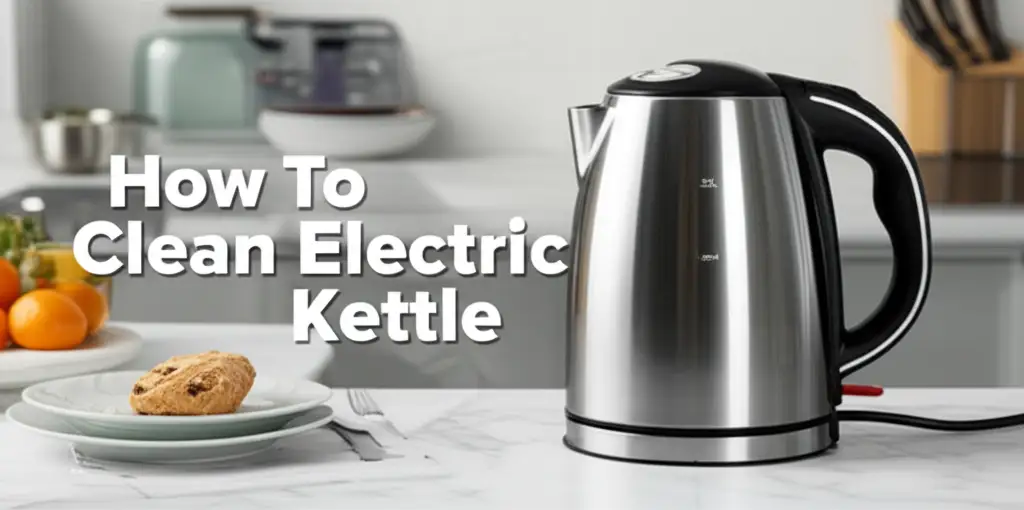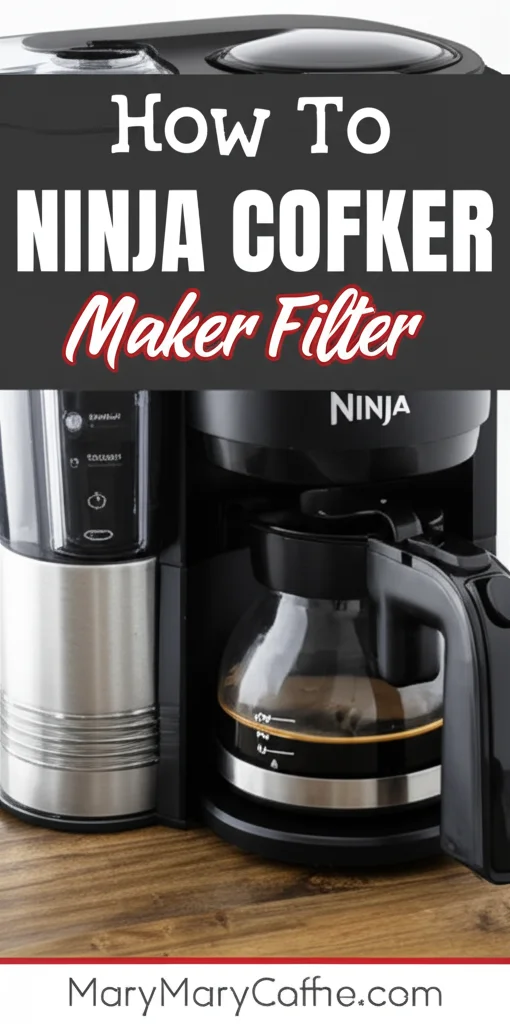· Kitchen Appliances · 13 min read
How To Clean Electric Kettle

Mastering Electric Kettle Cleaning for Better Brews
Do you use an electric kettle daily? Many of us do. This appliance provides hot water quickly for tea, coffee, or instant meals. Over time, mineral deposits build up inside. This buildup, called limescale, affects how your kettle works. It can also change the taste of your drinks. Knowing how to clean an electric kettle properly helps keep it efficient. It also makes your beverages taste fresh.
This article will guide you through effective methods to clean your electric kettle. We will cover natural cleaning agents like vinegar, baking soda, and citric acid. You will learn about preparing your kettle safely. We will also discuss cleaning the exterior and maintaining your kettle for long-term use. By following these steps, you ensure your kettle serves you well for years.
Takeaway
- Regularly descale your electric kettle to remove mineral buildup.
- Use natural acids like vinegar or citric acid for effective cleaning.
- Always unplug and empty your kettle before cleaning it.
- Rinse the kettle thoroughly multiple times after cleaning.
- Clean the exterior and filter for complete maintenance.
To clean an electric kettle, fill it with a descaling solution, such as diluted white vinegar or citric acid, and boil. Let it sit for 30 minutes to an hour, then empty and rinse thoroughly several times. This process effectively removes limescale, ensuring clean and fresh-tasting water.
Understanding Limescale: Why Your Kettle Needs Cleaning
Your electric kettle works hard to heat water for you. Every time you boil water, tiny amounts of minerals remain. These minerals mostly include calcium and magnesium. Over time, they stick to the inside of your kettle. This forms a white, crusty layer known as limescale.
Limescale buildup is more common in areas with hard water. Hard water contains higher levels of dissolved minerals. If you notice white flakes in your boiled water, that is limescale. This buildup does not look nice. It also makes your kettle less efficient.
A layer of limescale acts like an insulator. It prevents the heating element from transferring heat to the water effectively. This means your kettle takes longer to boil water. It also uses more electricity to do the same job. Removing limescale makes your kettle work faster. It also saves energy.
Beyond efficiency, limescale affects the taste of your water. The mineral deposits can give boiled water a strange, chalky flavor. This can ruin your tea or coffee. Regularly cleaning your kettle removes these deposits. This ensures your drinks taste pure and clean. A clean kettle also helps maintain its lifespan.
Preparing Your Kettle for Cleaning: Safety First
Before you start cleaning your electric kettle, safety is most important. Never clean an appliance that is plugged in. Always make sure your kettle is disconnected from the power source. This prevents any electrical hazards. I always pull the plug from the wall first.
After unplugging, check if the kettle is hot. If you just used it, let it cool down completely. Cleaning a hot kettle can be dangerous. The cleaning solutions might react differently with hot surfaces. It could also cause burns if you touch it. A cool kettle is safe to handle.
Next, empty all water from the kettle. Make sure no water remains inside. You want a dry interior before adding any cleaning solutions. This ensures the cleaning agent works at its full strength. It also prevents accidental spills of hot liquid if you need to move it.
Give the interior a quick visual check. Notice how much limescale has built up. This helps you decide which cleaning method will be most effective. Sometimes, a light rinse might remove loose particles. This step prepares your kettle for a deeper clean. Safety and proper preparation make the cleaning process easier and more successful.
The Vinegar Method: Natural Descaling Power
White vinegar is a common household item. It is also an excellent natural descaler for electric kettles. Its acetic acid content breaks down mineral deposits effectively. This method is simple and usually very effective for removing limescale. I find it works wonders for many cleaning tasks.
To start, fill your electric kettle with equal parts white vinegar and water. For example, if your kettle holds 1.5 liters, use 750ml of vinegar and 750ml of water. Do not fill it past the maximum fill line. Filling it too much can cause overflow when it boils. The vinegar solution needs space to move.
Bring this solution to a boil. Once it boils, let the kettle sit undisturbed for at least 30 minutes. For heavy limescale buildup, you can let it sit for an hour or even longer. The longer soaking time allows the vinegar to dissolve stubborn deposits. You might even see some flakes loosening.
After soaking, pour out the vinegar solution. Rinse the inside of the kettle thoroughly with fresh water. Do this several times to remove any remaining vinegar smell or taste. You can boil fresh water in the kettle and discard it once or twice. This ensures no vinegar residue remains. This method is also useful for various cleaning tasks around your home, like when you how to clean shower with vinegar or even when you how to clean glass with vinegar.
Baking Soda & Lemon: Gentle Cleaning Alternatives
Sometimes, you might not want to use vinegar. Or maybe you have only light limescale. Baking soda and lemon juice offer gentle, natural cleaning alternatives. They are effective and leave a fresh scent. These methods are good for regular maintenance.
For the baking soda method, add one to two tablespoons of baking soda to your empty kettle. Fill the kettle with water up to the maximum line. Stir the mixture until the baking soda dissolves. Bring this solution to a boil. After it boils, let it sit for about 15-20 minutes. The baking soda helps to loosen mineral deposits. Then, empty the kettle and rinse it thoroughly with fresh water. You may need to scrub gently with a soft brush for any remaining spots.
Lemon juice is another excellent option, especially for light descaling. Its citric acid content is a natural cleaning agent. Cut a lemon into slices. Place the slices into your kettle. Fill the kettle with water to the maximum line. Boil the water with the lemon slices inside. Let it sit for about 30 minutes to an hour after boiling. The lemon will release its cleaning properties. This also leaves a pleasant citrus smell.
After soaking, discard the lemon slices and the water. Rinse the kettle several times with fresh water. For best results, you can boil fresh water once or twice and discard it. This ensures no lemon residue or smell remains. Both baking soda and lemon provide effective and non-toxic cleaning solutions. They help keep your kettle clean and fresh.
Citric Acid: Strongest Weapon Against Limescale
When faced with heavy limescale buildup, citric acid often provides the most powerful solution. Citric acid is a natural acid found in citrus fruits. It is available in powder form. This makes it a highly concentrated and effective descaler. I find it works faster than vinegar for tough jobs.
To use citric acid, empty your electric kettle first. Add one to two tablespoons of powdered citric acid to the kettle. The exact amount depends on the kettle’s size and the amount of limescale. Then, fill the kettle with water up to the maximum fill line. Stir the water to help dissolve the citric acid powder. You will see it disappear into the water.
Bring the citric acid solution to a boil. Once it reaches boiling point, switch off the kettle. Let the solution sit inside the kettle for at least 20-30 minutes. For very stubborn limescale, you can extend the soaking time to an hour. The acid actively works to dissolve the mineral deposits during this period. You will often see the limescale dissolving before your eyes.
After soaking, carefully pour out the citric acid solution. The interior of your kettle should look much cleaner. Now, rinse the kettle thoroughly with fresh water. Do this multiple times. It is important to remove all traces of the citric acid. To be extra sure, boil a full kettle of fresh water and discard it. Repeat this step once more. This ensures your kettle is completely clean and ready for use. Maintaining a clean water source, much like knowing how to clean water filter, is key to avoiding new buildup.
Cleaning the Exterior and Filter: Completing the Kettle Care
Cleaning the inside of your electric kettle is crucial. However, do not forget the exterior and the filter. A clean exterior makes your kettle look good. A clean filter ensures clean, sediment-free water for your drinks. Both steps are vital for complete kettle care. This is similar to how you would care for a how to clean stainless steel kettle that is not electric.
To clean the exterior, first ensure the kettle is unplugged and cool. Use a soft, damp cloth to wipe down the outside surface. For stainless steel kettles, a microfiber cloth works well. You can use a mild dish soap solution for stubborn marks or spills. Apply a small amount to the cloth, wipe the surface, and then wipe again with a clean, damp cloth. Dry the exterior thoroughly with a clean, dry cloth to prevent water spots. Avoid harsh abrasive cleaners. They can scratch or damage the finish. Also, never immerse the base or electrical components in water.
Most electric kettles have a removable mesh filter near the spout. This filter catches any loose limescale flakes or impurities. It prevents them from pouring into your cup. Gently remove this filter from the kettle. Some filters simply unclip. Others might require a small push. Once removed, rinse the filter under running water. Use a soft brush, like an old toothbrush, to gently scrub away any trapped limescale or debris.
For heavily scaled filters, you can soak them in a small bowl of the same descaling solution you used for the kettle (vinegar or citric acid). Let it soak for 15-30 minutes. Then, scrub and rinse thoroughly. Ensure the filter is completely clean before putting it back into the kettle. A clean filter means cleaner water every time you pour.
Maintaining a Clean Kettle: Preventing Future Buildup
Regular cleaning keeps your electric kettle in top shape. However, you can also take steps to prevent excessive limescale buildup. Prevention is easier than cure. Adopting simple habits extends the time between deep cleans. It also helps your kettle last longer.
First, consider using filtered water. Hard water causes limescale. Using a water filter reduces the mineral content in your tap water. This significantly slows down limescale accumulation inside your kettle. Many homes have filtered water pitchers or faucet filters. Using water from these sources will make a big difference. I always fill my kettle with filtered water.
Second, empty your kettle after each use. Do not let water sit in it for long periods. When water cools, minerals settle and cling to the kettle’s surface. Emptying the kettle prevents this settling process. It also ensures you start with fresh water each time. This simple habit can reduce buildup noticeably. It also prevents stagnant water issues.
Third, perform a quick rinse regularly. After emptying, give the kettle a quick swish with fresh water. This helps dislodge any newly formed, loose mineral particles before they harden. You can also wipe the interior with a soft cloth if it is cool enough. This takes only a few seconds. This small effort makes a big impact over time.
Finally, schedule regular light descaling. Even with preventive measures, some buildup is inevitable. Aim to descale your kettle every one to three months. The frequency depends on your water hardness and kettle usage. A quick vinegar or citric acid wash prevents heavy, stubborn limescale. This keeps your kettle efficient and your drinks tasting pure. Regular maintenance is key for any appliance.
FAQ Section
Can I use dish soap to clean my electric kettle?
You can use a small amount of dish soap to clean the exterior of your electric kettle. Wipe it with a damp cloth and then dry it. Do not use dish soap inside the kettle. It can leave a residue that affects the taste of your water. Dish soap is not effective for removing limescale either.
How often should I clean my electric kettle?
The cleaning frequency depends on your water hardness and how often you use the kettle. For daily users in hard water areas, descaling once a month is ideal. If you have soft water or use it less often, every two to three months might be enough. Regular exterior cleaning and filter rinsing are good weekly habits.
Is limescale in my kettle harmful?
Limescale, composed mainly of calcium and magnesium, is generally not harmful to health if consumed. These minerals are naturally present in water. However, excessive limescale can affect the taste of your drinks. It can also reduce your kettle’s efficiency. Large flakes can be unpleasant to drink.
How do I remove stubborn stains from my kettle?
For stubborn limescale, use a stronger citric acid solution or let vinegar soak longer, even overnight. Gently scrub inside with a soft brush or sponge after soaking. For exterior stains, a specialized stainless steel cleaner or a paste of baking soda and water can help. Always rinse thoroughly.
What if my kettle smells after cleaning?
A lingering smell after cleaning, especially with vinegar, is common. To remove it, fill the kettle with fresh water and boil it. Discard this water. Repeat this process two or three times. This flushes out any residual odor. You can also add a slice of lemon to the boiling water for a fresh scent.
Can I put my electric kettle in the dishwasher?
No, you should never put your electric kettle in the dishwasher. The electrical components are not designed for water immersion or dishwasher detergents. This can damage the kettle, create an electrical hazard, and void its warranty. Always clean your electric kettle by hand.
Conclusion
Keeping your electric kettle clean is simple. It brings many benefits. You ensure purer, better-tasting hot water for all your favorite beverages. A clean kettle also works more efficiently. This saves energy and extends the life of your appliance. Knowing how to clean an electric kettle properly is a valuable skill.
We explored effective methods using everyday ingredients. White vinegar, baking soda, and citric acid are powerful tools against limescale. Remember to prioritize safety first. Always unplug your kettle and let it cool before cleaning. Regular maintenance of the interior, exterior, and filter keeps your kettle sparkling. Make kettle cleaning a regular part of your kitchen routine. Your taste buds and your wallet will thank you for it. Start cleaning your electric kettle today for a fresher brew tomorrow!
- electric kettle cleaning
- descaling kettle
- kettle maintenance
- kitchen cleaning




